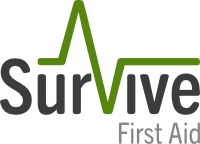ANZCOR Guideline 9.1.5 - First Aid Management of Harness Suspension Trauma

Summary
Who does this guideline apply to?
This guideline applies to adults, adolescents and children
Who is the audience for this guideline?
This guideline is for use by bystanders, first aiders and first aid training providers
Recommendations
The Australian and New Zealand Committee on Resuscitation (ANZCOR) makes the following recommendations:
- Send for an ambulance [Good Practice Statement]
- Rescue the person and place in a lying position as soon as it is safe to do so [Good Practice Statement]
Abbreviations
ANZCOR: Australian and New Zealand Committee on Resuscitation
Guideline
1 Introduction
Suspension trauma, or orthostatic shock, has been reported to affect people who are suspended within a body harness for a prolonged period of time (more than 10 min).1,2,3 It may result in loss of consciousness or death. This is thought to occur as a result of low blood pressure due to blood pooling in the legs combined with an increase in the activity of a part of the nervous system that slows the heart (vagal tone).3
2 Recognition
The signs and symptoms of suspension trauma are the same as shock. Harness suspension trauma should be considered where the person has been suspended by a harness, and are exhibiting any of the following:4
- feeling faint or dizzy
- breathlessness
- sweating
- looking pale
- nausea
- low blood pressure
- loss of responsiveness
3 Management
- Call for an ambulance.
- If safe to do so, free the person from the harness.
- If not responding, manage as per ANZCOR Basic Life Support flow chart [Refer to ANZCOR Guideline 8]
- Rest the responding person in a position of comfort, ideally lying down, and provide reassurance.
- Loosen or remove harness.
- Administer oxygen if available.
- Look for and manage any associated injuries, particularly for those who may have fallen or been electrocuted.
- Monitor level of response and breathing at frequent intervals.
Some agencies have previously recommended that those with suspension trauma are maintained in a sitting position and avoid lying flat for 30 minutes5. This review has found no evidence to support this practice and it may be harmful.
References
- Turner N.L., Wassell J.T., Whisler R., Zwiener J. Suspension tolerance in a full-body safety harness, and a prototype harness accessory. [Evaluation Studies. Journal Article] Journal of Occupational & Environmental Hygiene. 5 (4):227-31, 2008.
- Lee C., Porter K.M. Suspension trauma. [Journal Article. Review. Emergency Medicine Journal. 24 (4):237-8, 2007.
- Rauch S, Schenk K, Strapazzon G, Dal Cappello T, Gatterer H, Palma M, Erckert M, Oberhuber L, Bliemsrieder B, Brugger H, Paal P. Suspension syndrome: a potentially fatal vagally mediated circulatory collapse - an experimental randomized crossover trial. European journal of applied physiology. 2019 Jun;119(6):1353-65.
- Adish A., Robinson L., Codling A., Harris-Roberts J., Lee C., Porter K. Evidence based review of the current guidance on first aid measures for suspension trauma. Health and Safety Executive. Research Report RR708. May 2009. http://www.hse.gov.uk/research/rrpdf/rr708.pdf
- Raynovich B, Rwaili FT and Bishop P. (2009). Dangerous suspension. Understanding suspension syndrome & prehospital treatment for those at risk. JEMS : a journal of emergency medical services. 34(8):44-51, 53;
Further Reading
- ANZCOR Guideline 3 Recognition and First Aid Management of the Unconscious Person
- ANZCOR Guideline 4 Airway
- ANZCOR Guideline 8 Cardiopulmonary Resuscitation
- ANZCOR Guideline 9.1.6 Management of Suspected Spinal Injury
- ANZCOR Guideline 9.2.3 Shock
About this Guideline
- Search date/s: January 2020
- Question/PICO : For people suspended in a harness for a prolonged period awaiting rescue, what interventions are effective in the prevention of poor clinical outcomes
- Method: Scoping literature review
- Primary reviewers: Finlay Macneil
- Other consultation: Kevin Nation
- Worksheet: https://resus.org.au/download/worksheets/worksheets_to_support_guidelines/gl-9-1-5-harness-suspension-trauma-worksheet-final.pdf
- Approved: April 2021
- Guidelines superseded: ARC Guideline 9.1.5 - July 2009
